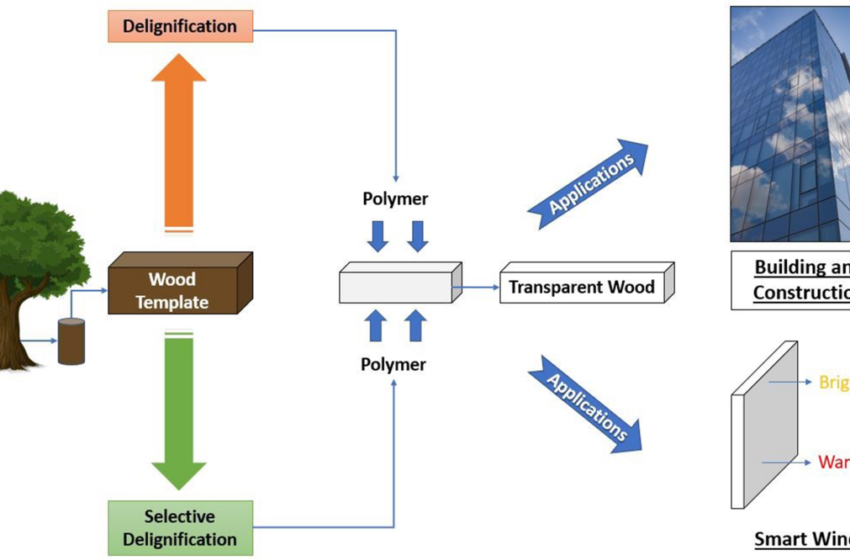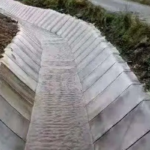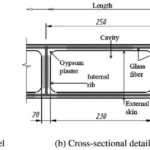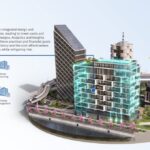
The construction industry is constantly exploring innovative materials that balance sustainability, performance, and aesthetics. One such groundbreaking material is transparent wood, a revolutionary solution that combines the natural beauty of wood with the transparency of glass. Transparent wood has the potential to transform architecture and design, offering a unique blend of functionality and environmental benefits.
What is Transparent Wood?
Transparent wood is a modified form of natural wood that is processed to become partially or fully transparent. This innovative material retains the structural strength of wood while allowing light to pass through, making it a viable alternative to traditional materials like glass and plastic.
How is Transparent Wood Made?
The process of creating transparent wood involves several steps:
- Delignification:
- The wood is treated with chemicals to remove lignin, the compound responsible for wood’s color and opacity.
- This process leaves behind a porous structure of cellulose fibers.
- Polymer Infusion:
- The porous wood is infused with a transparent polymer, such as epoxy or acrylic, which fills the gaps and restores its strength.
- Curing and Finishing:
- The material is cured to harden the polymer and polished to enhance transparency.
Properties of Transparent Wood
Transparent wood offers a unique combination of properties that make it an attractive choice for various applications:
- High Strength:
- Retains the natural strength and flexibility of wood, making it more durable than glass.
- Lightweight:
- Significantly lighter than traditional glass, reducing structural load.
- Transparency:
- Allows light transmission while maintaining a degree of privacy, thanks to its semi-transparent nature.
- Thermal Insulation:
- Provides better thermal insulation than glass, reducing energy consumption in buildings.
- Sustainability:
- Made from renewable resources, transparent wood is an eco-friendly alternative to non-biodegradable materials.
Applications of Transparent Wood
Transparent wood has a wide range of potential applications in construction and design:
- Windows and Skylights:
- Offers a sustainable alternative to glass with improved insulation properties.
- Solar Panels:
- Enhances the efficiency of solar panels by reducing glare and improving light diffusion.
- Interior Design:
- Used for furniture, partitions, and decorative elements to create modern, light-filled spaces.
- Building Facades:
- Combines aesthetics with energy efficiency for innovative architectural designs.
- Lighting Solutions:
- Can be used to create diffused lighting panels that mimic natural light.
Advantages of Transparent Wood
- Eco-Friendly:
- Reduces reliance on energy-intensive materials like glass and plastics.
- Energy Efficiency:
- Improves building insulation, reducing heating and cooling costs.
- Aesthetic Appeal:
- Combines natural wood grain with modern transparency, offering a unique design element.
- Safety:
- Unlike glass, transparent wood is shatter-resistant, making it safer for use in buildings.
Challenges and Limitations
While transparent wood has immense potential, it also faces some challenges:
- Production Costs:
- The process of delignification and polymer infusion is currently expensive and time-consuming.
- Scalability:
- Producing large panels of transparent wood for commercial use remains a technical challenge.
- Durability:
- Long-term performance under varying environmental conditions is still under research.
- Optical Clarity:
- Achieving full transparency can be difficult, and the material often remains semi-transparent.
The Future of Transparent Wood
As research and technology advance, the cost and scalability of transparent wood production are expected to improve. Innovations in polymer technology and processing methods could make this material more accessible for widespread use. In the future, we may see transparent wood becoming a standard material in sustainable construction and design.
Conclusion
Transparent wood is more than just a novel material; it represents a paradigm shift in sustainable construction. With its unique combination of strength, transparency, and eco-friendliness, transparent wood has the potential to revolutionize architecture and design. While challenges remain, the progress being made is promising, and the adoption of transparent wood could pave the way for a greener, more innovative future in construction.




